The triumph of allied tanks
Soissons and Reims
At Soissons, the German offensive was replaced by the stunning French counter-strike launched by 18 on July 1918 without any artillery preparation.
The French 10 and 6 armies came under the command of Mangin and Degout — on Soissons-Chatto-Thierry-Reims. Dense masses of infantry went on the attack with the support of the hitherto unprecedented number of tanks for one section. Small and fast Renault tanks showed themselves.
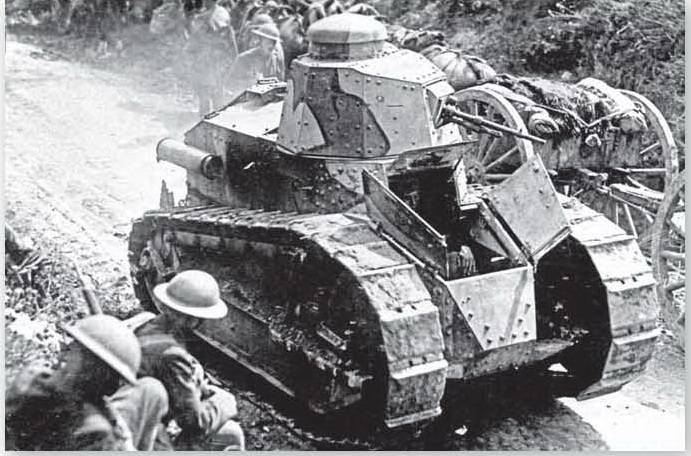
On the 20-kilometer front, Mangeon had six groups of medium tanks (210 vehicles) and three battalions of Renault light tanks (each with 45 units) in reserve. The groups were divided into divisions and attached to military units and formations.
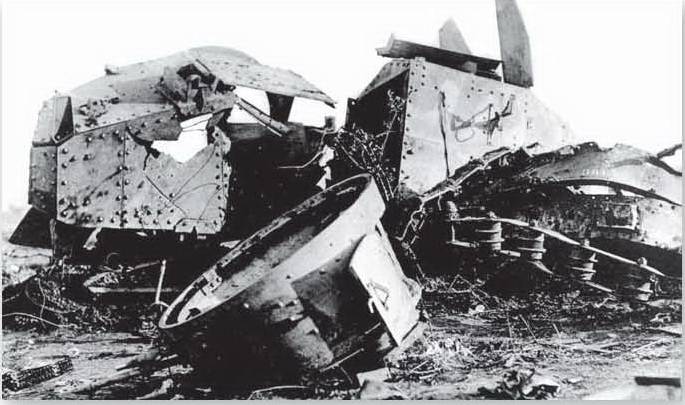
The degut on the 16-kilometer front had one group of medium tanks and three battalions of light tanks.
In total - over 500 machines.
At 4 in the morning the offensive began. Under the cover of light fog, the tanks quickly moved forward, overtook the infantry and entered the battle. Once again, tactical surprise was achieved by winning space 4 - 6 km deep in the first day. On that day, 102 of the tank was lost (including 62 from artillery fire), and personnel losses reached 25%.
The next day, 50 tanks were hit by artillery, on the third day - 17, on the fourth - 32, and on the fifth - 48 vehicles. When the offensive was over, the composition of the tanks of the 10 Army was almost exhausted.
In the 6 Army, the losses were less significant, because here the Germans had to retreat more hastily. The army lost 58 vehicles and 6% of the crews, but achieved the greatest success - having gone in six days into the enemy’s defense at 20 - 30 km.
In this operation, tanks were used that served only to transport people. They crossed the German lines behind the erupted battle tanks and planted machine gunners to create machine gun nests in the tactical rear of the Germans, and then returned for reinforcements.
The German infantry did not withstand such attacks everywhere - and the French managed to win territory southwest of Soissons. Further mass attacks, supported again by a significant number of tanks, were repelled.
The "black day" of the German army
In early August 1918, the Germans began a retreat along the entire front.
On August 8, the day that General E. Ludendorff called “The Black Day of the German Army”, the British and French launched an offensive early in the morning in the thick fog (reinforced by smoke curtains) between the Somme and Oise, with the support of large tank forces, and penetrated far into the depths the German front - “zeroing out” the 6 - 7 divisions that stood on this section (even the headquarters of the divisions were taken by surprise by tanks at the locations).
The British had on the 16-kilometer front about 430 tanks. The attack began at dawn after a brief artillery fire, which was intended to mask the noise of tank engines. Having managed to catch the enemy by surprise, they won the territory with a depth of 10 km, at the cost of losing about 100 tanks.
On the next day, 145 was destroyed from the 39 tanks used, and on the third day, 67 from the 30 tanks.
The French deployed two battalions (2,5 light tanks) on the 90-kilometer front, which allowed them to win space in 12 km of depth.
The Germans suffered heavy damage to prisoners and the material part.
The morale was also undermined.
The wealth of the anti-German coalition in manpower and equipment (especially in tanks underestimated by the Germans) made it possible to continue the offensive non-stop.
Extremely heavy battles with the British followed in late August between the Somme and Scarp. Narrow, deep tank breakthroughs became a characteristic phenomenon - after a brief but fierce artillery fire and with the support of a smoke curtain. General Mangen, operating north of Soissons, also used tanks in large numbers - from 20 August to 17 September (of 480 tanks 215 were destroyed, including 60 - artillery).
Saint Miel and the Meuse
In the period from September 12 to October 9 (Saint-Miel and Maas-Argonne) 180 light and 60 medium, and 350 light and 60 medium tanks were used, respectively.
During the offensive of the French 4 Army under the command of Gouraud on the 25 of September 1918 in Champagne, each corps had on average 90 tanks and, in addition, there were significant reserves. The area to be overcome on the first day was in such a condition that it was inaccessible to tanks. The infantry offensive was to begin six hours after the start of artillery preparation. 2800 people worked all day - to turn roads and terrain into passable for tanks.
Significant results, however, could not be achieved. Having concentrated a tank fist in one of the buildings (150 vehicles), the French delivered a combined blow. When the tanks were pulled out of battle on October 8, the very high damage of this fist was established: in tanks - 39%, in officers - 40%, in lower ranks - 33%.
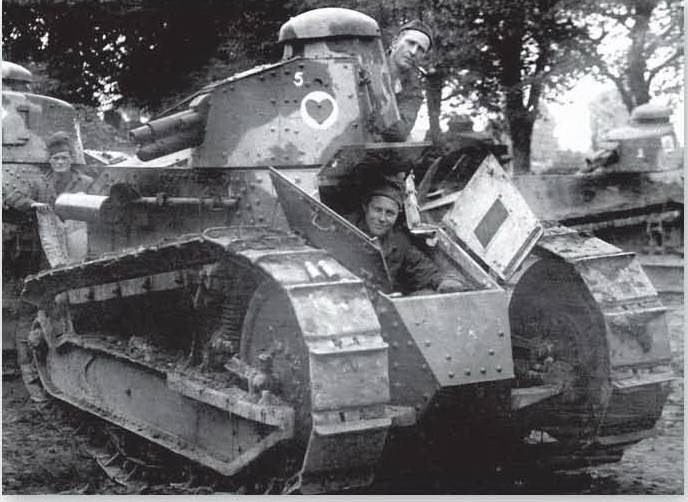
The advance of King Albert’s troops in Flanders 14 - 19 on October 1918 was supported by 180 French tanks, of which half (and half of the crews) were lost. Separate tank units traveled to 74 km without leaving the case for 58 hours.
25 - On 26 on October two tank battalions took part in the attack on the Hunding position. The organization of the offensive was successful. The noise of the engines was masked by airplanes firing at German observation posts. Special artillery detachments acted against the near anti-tank defense of the Germans. Success resulted in a breakthrough 3 km deep with the loss of 33% of people and 50% of the material part.
Thus, the massive use of tanks, coupled with the use of smoke screens, has become the most dangerous enemy of the Germans. Its importance increased with the decline of spirit and the growth of fatigue and powerlessness of the German divisions - whose nerves were no longer able to withstand artillery fire and the gigantic onslaught of tanks.
The crack on August 8, the growing participation in the hostilities of major US forces, and, most importantly, the defeat of Bulgaria and the collapse of the Balkan Front of the German Bloc, broke the spirit of the Second Reich High Command - which decided to end the struggle by applying for a truce addressed to the President of the United States Wilson.
To be continued
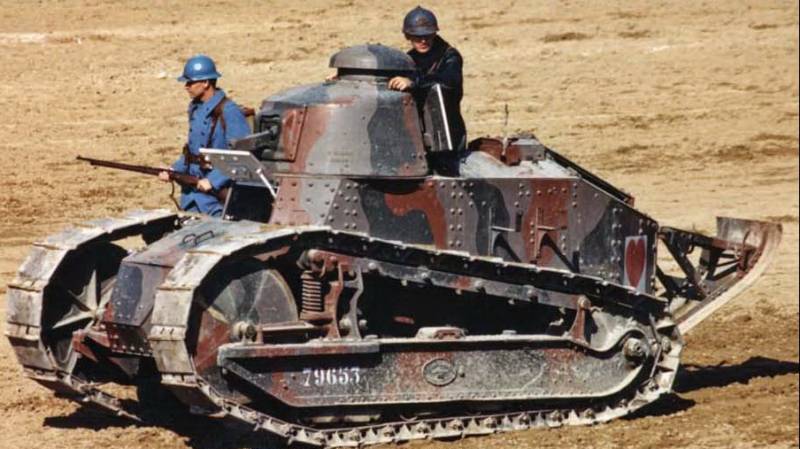
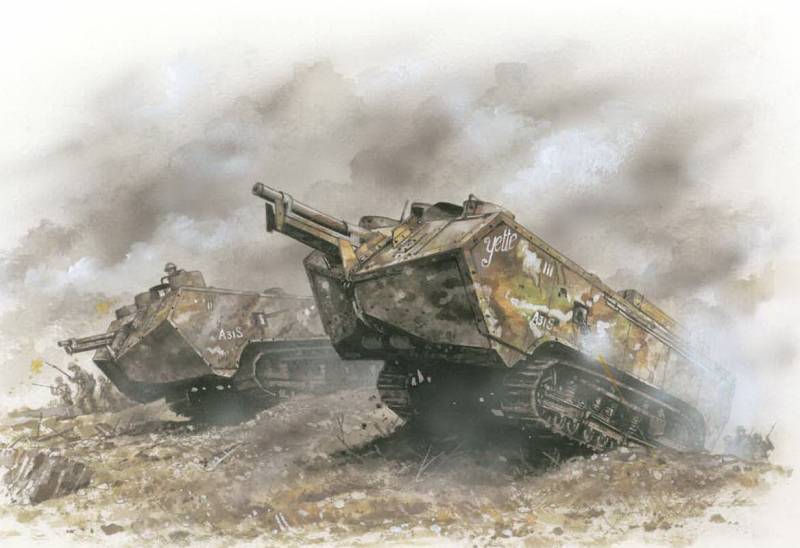
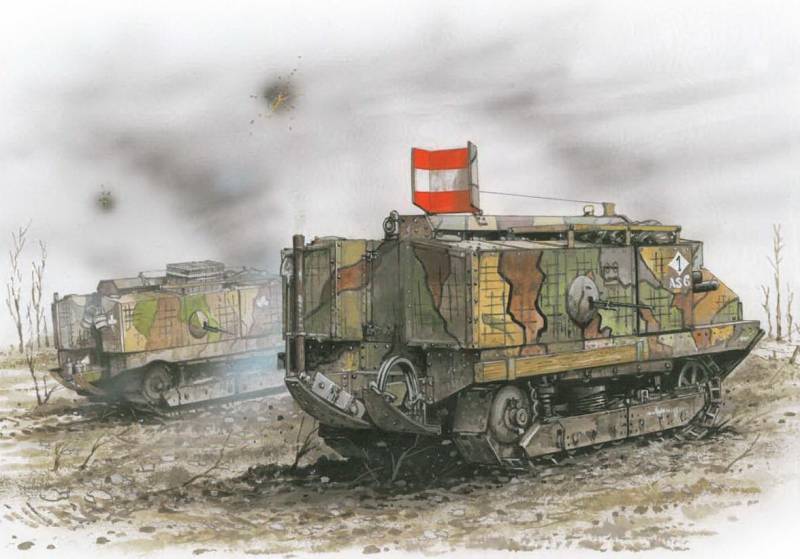
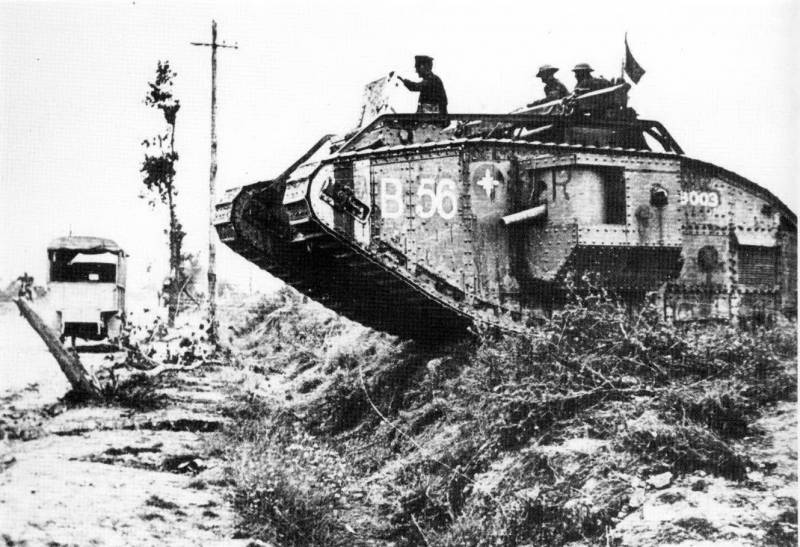
Information